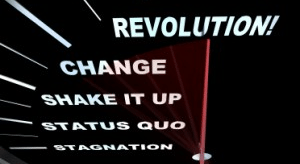Millennials Are Rejecting the Default
… and It’s a Very Good Thing
We all know that Millennials are challenging our traditional work environments. But the big question is “why?” Why are Millennials challenging the system rather than assimilating like earlier generations? I struggled with finding an explanation other than demographics until I read a sentence written by professor Adam Grant in his recent book: Originals: How Non-Conformists Move the World.
“The hallmark of originality is rejecting the default and exploring whether a better operation exists.” – Adam Grant.
Millennials are rejecting the default and it’s disconcerting, but necessary and in my view, a very good thing. When it comes to the work environment, Generation X, Baby Boomers and the Silent Generation don’t just represent the default … we are the default. This might be why so many of us take this personally. Why are Millennials so eager and able to reject a default that has been in place for generations?
Two reasons: technology and societal shift.
Technology. Millennials are digital natives. They grew up with technology and view everything through a technological filter. They look at our daily lives and think “there’s got to be an app for that.” It’s ingrained in them to use technology to question, dismantle, and reconfigure processes. They are rejecting the default option in search of a better way.
Societal shift. Generation X and Baby Boomers actually know people who worked 40 hours a week for 40 years at the same company, earned that gold watch and retired at 65 to play golf in Florida. We also know of people who had pensions; who were protected by unions; and for whom a single breadwinner could support a family even while working for a minimum wage. This is the default.
But, Millennials are not part of that default. Retire at 65? Not if they are still paying off their college loans. Pensions, funded 401ks, or a home with equity for retirement? Not likely. Even if we set aside monetary limitations, people are living longer. Retiring at 65 is no longer that appealing or feasible for most. The default no longer works, and this is why Millennials are forcing us to re-examine everything about our work culture.
One example of this came out of our recent SVN Millennials Career report (How Commercial Real Estate Firms can Attract and Retain Millennials) around the topic of flexibility in the workplace. According to our survey, flexibility of hours and location for work was a top five “must have” for Millennials and in fact, more men than women cited it as an important factor when choosing companies. This is quite a switch from 5-10 years ago when flexibility was a “woman” or “parent” issue. To even mention the word back then would set you on the Mommy track.
But, what is driving this new quest for flexibility? Part of it goes back to the technology filters. If technology allows us to work wherever and whenever we want, why can’t we? If culturally no one is racing to retirement and the other default rewards don’t exist, why do we have to stick to a 9-5, 5 days per week schedule? Flexibility does not mean Millennials want to work less. In fact, most want to work more, but they also want to work smarter… and to avoid rush hour. When the default is sitting an extra 30 to 60 minutes in traffic, when you don’t actually have to… why do we?
It’s not about a different work ethic. It’s about a different work style.
That’s an important distinction to make; especially because that different work style benefits more than just Millennials. Opening up the flexibility conversation beyond women and parents is a benefit to all employees, whether it’s the single employee who doesn’t have anyone to help them drop off a car for repairs or wait for a furniture delivery; the Gen X’er dealing with aging parents; or the Baby Boomer who wants to take a brief career pause or sabbatical.
If you look around, the default no longer works for the majority of us, and this is why the Millennials’ rejection of the default is a very good thing.
Please visit our SVNICorp YouTube page to see my recent keynote to learn more about the how Millennials are challenging and changing how and where we live and work.
[bctt tweet=”If technology allows us to work wherever and whenever we want, why can’t we?”]

 One of the hallmarks of the Sperry Van Ness® (SVN) brand is our
One of the hallmarks of the Sperry Van Ness® (SVN) brand is our 




